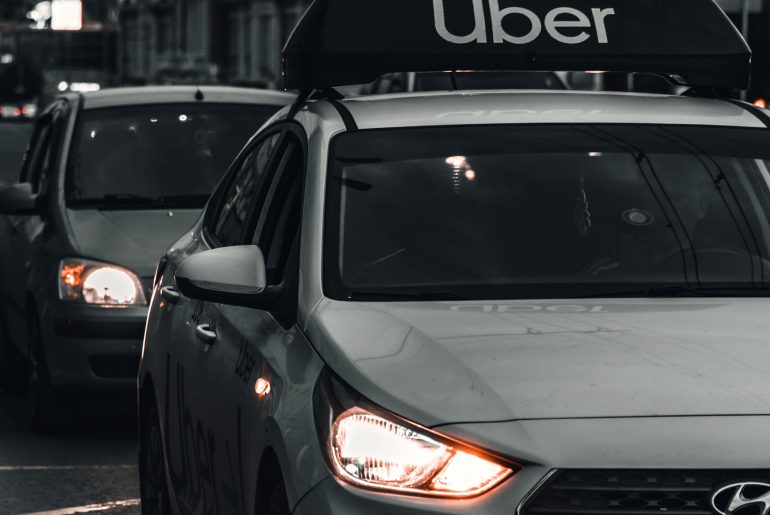This article may contain references to products or services from one or more of our advertisers or partners. We may receive compensation when you click on links to those products or services. Nonetheless, our opinions are our own.
The information presented in this article is accurate to the best of our knowledge at the time of publication. However, information is subject to change, and no guarantees are made about the continued accuracy or completeness of this content after its publication date.

Updated by Albert Fang
Who’s the Best for Drivers: Curb, Uber or Grab?
If you are looking to work as a driver in the age of Uber and other ride-share companies, you may have noticed that there is quite a lot of stiff competition out there. Should you drive as a regular citizen using your own car for Uber or Lyft, or if you are a taxi driver, how do you compete against the ride-share companies for passengers? Those who drive for a living should remember that clients are motivated primarily by convenience and cost, and that means they will choose the option that allows them to request rides on demand with little delay and the ability to pay through applications on their smart phones rather than carry around cash. Is a driver better off working for Grab vs Uber or Uber vs Curb? If you are looking to get into the gig industry of on-demand chauffeuring but are unsure which service you should drive for, keep reading to learn about several available options.
Careers in Gig Driving
It makes no difference whether you are a civilian with your own vehicle looking to drive for a ride-share company or a seasonal taxi driver looking for new clients. Any of the following options might be useful to your career:
Uber
Uber is probably the most recognizable name in the independent rides-hare industry. The pioneering service was founded in 2010, and it opened the door to the concept of individuals using their own vehicles to give passengers rides for payment, connecting through Uber‘s app to match passengers in need with drivers in the area. Classified as independent contractors, Uber drivers can work as often or as little as they want. Although passengers have the option of paying in cash, most transactions happen through the application, using bank cards or gift cards.
Uber keeps a portion of the fee, and the rest goes to the driver. On a good day, drivers can expect to make around $13-17 an hour. Uber drivers are required to pass an extensive background check, carry proof of insurance on their vehicles (Uber offers a small insurance plan for uninsured drivers), file their own taxes, and perform other duties expected of self-employed contractors.
Curb
This is a service that works much like regular ride hailing services, with the exception that it caters only to taxi drivers. Many taxi drivers find that in the era of Uber and Lyft, finding passengers is rather difficult, and a lot of time is wasted waiting for a hail, or a prescheduled ride. Curb helps bridge the gap between traditional taxi services and ride hailing. The service started its life as Taxi Magic, a simple ride hailing service, but expanded to include a full range of passenger services commonly offered by ride sharing competitors. Like Uber drivers, taxi drivers can answer passenger requests and operate both as a taxi fleet driver and a ride-share driver.
The service matches passengers in need of a ride with available taxis without the need for a dispatch system. As with ride-sharing apps, passengers using Curb can pay within the application using cards or cash. In some areas, drivers may even be assigned predetermined routes. Drivers can make around $17 an hour, more than Uber drivers, depending on the region. In order to drive for Curb, drivers must have a valid driver’s license or taxi license, access to a taxi vehicle, pass Curb driver training, a drug test and a background check.
Grab
Uber has a presence in nearly every country in the world, but it is not unopposed. Ride-hailing services that challenge Uber are in every country in which the more popular ride-share service operates. Grab is one such company, operating primarily in Southeast Asia and giving Uber a serious challenge. Like Uber, Grab also offers rides on demand, food and item delivery services, and more recently, financial services. Grab was initially a taxi hailing service, similar to Curb. However, it quickly expanded, giving its customers more features as needed, moving into the area of finance once the company realized that many of its drivers did not have bank accounts.
Grab drivers must have a professional license, be at least 18 years old, provide their own vehicle, and speak the local language, as well as English. Drivers must not have more than two accidents on their records, and foreigners must have resided in the country of operation for at least one year. Drivers must also pass a driver’s test and a criminal background test. In the same country, drivers for Grab tend to make the same amount as drivers for Uber.
Summary
All over the world, drivers are learning how easy it is to make money using their own vehicles by driving for ride-hailing services. Taxi drivers are no longer left out in the cold with services like Curb, allowing them to find customers as easily as Uber, and Grab is setting itself up not only as an employer for its drivers but also a bank. Uber continues to do what it does best, filling the need for on-demand rides in nearly every major city in the world. It is difficult to say which one is best, as all three have excellent records for earnings and take seriously ensuring that their drivers are qualified. In the end, the best one is the one that serves the client and the drivers’ needs at the time they are needed. If you are a driver wondering if Grab vs Uber or Uber vs Curb are your best options, this article has hopefully helped make the choice.
FAQ
- Which of these services require a professional taxi or chauffeur license?
Curb and Grab both require professional licenses, Uber does not.
- Which app is the cheapest and most expensive?
Comparing the fares for each service based on the same distance and time spent riding, Grab is the cheapest option, followed by Curb. Uber is the most expensive worldwide.
- Which of these services is the safest?
Curb makes use of professional licensed taxi drivers, and has experienced the fewest incidents between drivers and riders. Uber, percentage-wise, has had the most safety incidents, while Grab has had fewer incidents, though more than Curb based on percentages.

Reviewed and edited by Albert Fang.
See a typo or want to suggest an edit/revision to the content? Use the contact us form to provide feedback.
At FangWallet, we value editorial integrity and open collaboration in curating quality content for readers to enjoy. Much appreciated for the assist.
Did you like our article and find it insightful? We encourage sharing the article link with family and friends to benefit as well - better yet, sharing on social media. Thank you for the support! 🍉
Article Title: Grab vs Uber vs Curb Driver Comparison: Which Driver App to Pick?
https://fangwallet.com/2022/07/19/grab-vs-uber-vs-curb-driver-comparison-which-driver-app-to-pick/The FangWallet Promise
FangWallet is an editorially independent resource - founded on breaking down challenging financial concepts for anyone to understand since 2014. While we adhere to editorial integrity, note that this post may contain references to products from our partners.
The FangWallet promise is always to have your best interest in mind and be transparent and honest about the financial picture.
Become an Insider

Subscribe to get a free daily budget planner printable to help get your money on track!
Make passive money the right way. No spam.
Editorial Disclaimer: The editorial content on this page is not provided by any of the companies mentioned. The opinions expressed here are the author's alone.
The content of this website is for informational purposes only and does not represent investment advice, or an offer or solicitation to buy or sell any security, investment, or product. Investors are encouraged to do their own due diligence, and, if necessary, consult professional advising before making any investment decisions. Investing involves a high degree of risk, and financial losses may occur including the potential loss of principal.
Source Citation References:
+ Inspo












































